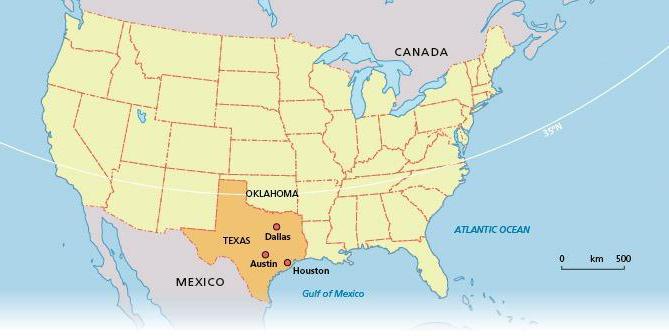
Texas is one of the southernmost states of the USA, bordering the Gulf of Mexico (Figure 1). It is known for hot weather and desert landscapes but last winter it was covered in a thick blanket of snow with freezing temperatures, and this soon led to power cuts throughout the state. In Dallas temperatures fell to -10°C when it would usually have been more like +15°C. In fact, temperatures in Dallas were colder than in Anchorage, Alaska. For the first time ever, winter storm warnings were put in place across the entire state of Texas, home to about 29 million people.
This very unusual weather was caused by a huge cold air mass moving south across the USA from the Arctic, carried by the jet stream (see Figure 2). Cold air masses such as this would typically remain north of the USA–Canada border, but this air mass moved thousands of miles south and, in mid-February, the storm dropped huge amounts of snow across the southern states of Texas and Oklahoma. This was caused by an unusual and sudden warming of the stratosphere (upper atmosphere) high above the Arctic, which in turn led to the weakening of the polar vortex. The polar vortex is a ring of cold air circling the poles which usually keeps the cold air in the Arctic. If the vortex weakens, as it did in February, the cold air is carried southwards by the meandering jet stream, taking freezing temperatures to areas which are usually warm.
Your organisation does not have access to this article.
Sign up today to give your students the edge they need to achieve their best grades with subject expertise
Subscribe




